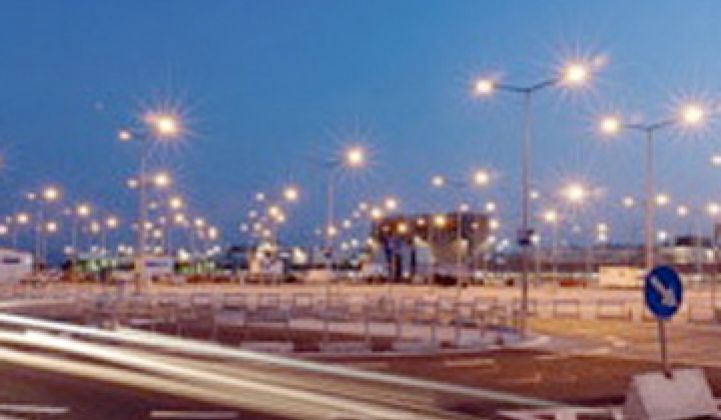The technology and lineage of lighting company Luxim are both notable and we'll cover them in a bit.
But the real news and the inspirational takeaway from this company is that it's selling its American-designed lighting technology into China -- in high volume.
An innovative greentech firm funded by VCs, generating revenue with sales from China and the U.S. It would seem to be the model for U.S. greentech leadership and economic recovery.
The 50-employee company was first financed in 2004 with VC funding from Sequoia Capital and has since taken a total of about $90 million from VC investors such as Rockport, Worldview, and DAG Ventures.
The company's technology is not new -- it was demonstrated by Nikolai Tesla a century ago. Luxim's tiny glass bulb is filled with argon, mercury, and metal halides. An RF frequency is applied to the bulb and its mounting puck, which excites the gas, causing it to glow and emit intense light. Obviously, mercury content, though smaller than with standard metal halides, threatens the "green" standing of any company -- but Luxim does offer a 100 percent take-back program for their bulbs.
Luxim's high-intensity plasma lighting competes with high-pressure sodium or high-intensity discharge lighting. Luxim's dimmable, electrode-less bulbs are a fraction of the size of the competition and can outlast and outlight their "nemesis," as Tony McGettigan, Luxim's CEO, referred to the large incumbent technology. In a recent video, he showed the incumbent bulb and said that there were 100 million of the bulbs "like cockroaches" squirreled away in street lamps, signage, gymnasiums, and airports. These bulbs are used in instances where LEDs are just not bright enough.
McGettigan said that those bulbs had a $20 billion annual electric bill that could be cut in half with Luxim's bulb -- with triple the life and with a higher quality of light.
Luxim's lights are used in the company's facility in Sunnyvale, California and the light quality is truly natural, not nauseatingly yellow like your typical high-bay HID or fluorescent fixtures.
Shapour Bakhtiari, Sr. Vice President of Operations and Technology, gave a tour of the modest facility and spoke of the wide variety of applications and markets for their bulb. The firm is currently going after 250-watt to 450-watt applications, but will be pursuing 600-watt to 1,000-watt sockets as well. Their 700-watt replacement bulb puts out 40,000 to 45,000 lumens.
As mentioned, Luxim is selling into China, has a Vice President of Business Development specifically for China and has compelling demonstrations of streets in China stocked with Luxim's bulbs. Luxim claims to have shipped 100,000 units and boasts a capacity of 300,000 units per year. The firm also claims a payback of less than one year in a new building and a two- to three-year payback in a retrofit.
The firm originally sold its tiny bulb as a light for projection TVs but has since pivoted to enter the market for public lighting. Many of Luxim's staff have spent some time at the former optical networking powerhouse JDSU.
Topanga Technologies, which has garnered funding from Khosla Ventures and is staffed by a number of ex-Luxim employees, is also looking to commercialize plasma lighting technology.



